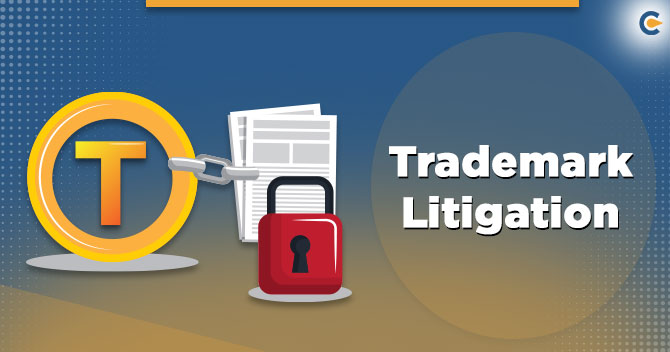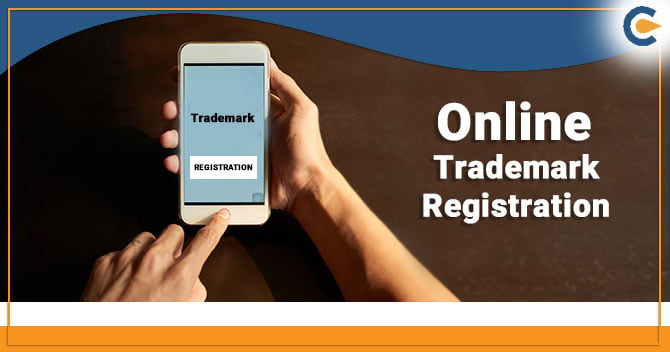Trademark law in India has witnessed tremendous growth in the past few years. There is increasingly aggressive enforcement of trademark rights by Trademark litigation. There is an enhancement in Trademark litigation as cases to claim damages have been filed. In view of the trademark, it can be observed that the regime has been developing fast in its platform.
Enforcement of Registered Trademark by Rights Courts/Government Bodies


Trademark Registry
This is the principal authority that regulates the trademark law in India. It oversees the process of application, prosecution, registration, opposition and so on.
Courts
Lawsuits for infringement and passing off, among other claims, can only be filed before District Courts and other higher courts in India. There are no specialised courts addressing issues only related to trademark law. However, specialised commercial courts have been created under the Commercial Courts, Commercial Divisions and Commercial Appellate Division of High Courts Act 2015 (Commercial Courts Act 2015[1]).
Such disputes are not only fast-tracked under the new statute, but they are also heard only by dedicated benches. Further, with a rich history of trademark jurisprudence and a strong common law tradition, there is a high degree of expertise, especially in High Courts and the Supreme Court.
Intellectual Property Appellate Board (IPAB)
This quasi-judicial authority is specially created to address issues of IP law. It is the appellate forum where appeals against orders of the Registrar of Trade Marks and others are heard under section 91 of Trade Marks Act.
Read our article:Process of Trademark Registration: Step by Step Guide
Principal Source of Law and Regulation related to trademark litigation
The details on principal Source of Law and Regulation Related to Trademark Litigations are as follows:-
National Statutes
The primary source of law governing trademarks in India is the Trade Marks Act 1999 (Trade Marks Act). The statute and the newly enacted Trade Marks Rules 2017 form a comprehensive regulatory regime. An official guideline has also issued by the Trade Marks Office (TMO), such as the Trade Marks Manual which govern the several aspects of trademark law.
Judicial Precedent
In India, the decisions of courts contribute extensively to the development of trademark law. Decisions of the High Courts (having appellate and writ jurisdiction) are binding upon lower courts in their respective jurisdictions which form an essential source of trademark law. Decisions of Registrar of Trade Marks as well as the Intellectual Property Appellate Board are also meant to be a major contributor to trademark law in India.
International Treaties
International treaties and conventions are the other sources of law in this area. Those Treaties become binding when they are adopted into domestic law. For example, several provisions of the WTO Agreement on (TRIPS) Trade-Related Aspects of Intellectual Property Rights 1994 were enacted in the Trade Marks Act. Where such treaties are not part of domestic law, they have persuasive though not binding value and help courts to interpret difficult areas of domestic law.
Prescribed Documents as per Rules and Regulations
Trademark litigation follows the rules prescribed for commercial disputes under the Commercial Courts Act 2015. All relevant documents need to be filed along with the claim at the time of filing of the suit {order XI, rule 1, Code of Civil Procedure 1908 (Civil Procedure Code)}. Additional documents can be filed within 30 days after the filing of the suit. Documents which are not filed at this stage cannot be relied upon at a later stage unless the court grants specific permission to this effect (order XI, rule 4, Civil Procedure Code).
Witness Evidence
Once issues have been framed, parties are required to present evidence. Rules relating to witness evidence include:
- Conduct of Examination-in-chief through written affidavits (order XVIII, rule 4(1), Civil Procedure Code).
- Affidavit evidence of all witnesses for one party must be filed simultaneously (order XVIII, rule 4(1A), Civil Procedure Code).
- Affidavit of any witness can be validly withdrawn before cross-examination commences (order XVIII, rule 4 (1C), Civil Procedure Code).
- The evidence is recorded either by the court directly or by a commissioner appointed by the court (order XVIII, rule 2, Civil Procedure Code).
Expert Evidence
- Expert evidence can be given on aspects of foreign law, science, art, identity, handwriting; fingerprints (section 45, Indian Evidence Act 1872).
- There is no fixed rule determining whether a person is truly an expert or not. This is a question for the court, taking into account relevant experience, credibility, consistency in opinions and so on.
How are monetary remedies assessed against a Registered Trademark Infringer?
Monetary remedies are assessed and awarded based on varying criteria. There are three forms in which damages are awarded in trademark litigation, namely:


Actual/Compensatory Damages
These damages reflect the actual loss that has been caused as a result of the infringement and which must be proved by the claimant.
Punitive Damages
This form of compensation is granted where the court believes that the amount of compensatory damages awarded is not proportionate to the extent of misconduct by the defendant. In such circumstances, the court awards damages over and above compensatory damages which have been already quantified.
Token/Nominal Damages
These are awarded in the light of an early resolution of a dispute. Alternatively, where defendants have proceeded against ex parte and the claimant is not in a position to prove the exact quantum of losses caused, in that case the court can award a fixed sum (as token damages) which it believes to be reasonable compensation for the infringement.
Appeals in Trademark Litigation
Any litigant has the option of filing an appeal against a final decision, as well as against interim orders


Appeals from Final Judgments
Any party has a right to file an appeal against final judgment before the Appellate Court. This is called the First Appeal (section 96, Code of Civil Procedure 1908 (Civil Procedure Code)). Suppose the first appellate court does not overturn the underlying final decision. In that case, the party can file a regular second appeal before a higher appellate court, but only if substantial question of law is involved (section 100, Civil Procedure Code). There is no set timeline for the resolution of a final appeal, and it can take from two to five years to get a decision.
Appeals from Interim Orders
Parties can also file an appeal against interim orders, provided that the appeal is permitted by the Civil Procedure Code (order XLIII, rule 1). Other orders can be appealed against when the final judgment in the suit is being appealed. Appeals from interim orders are resolved much quicker than those against final decisions, usually between one and six months.
Stay of Proceedings
This relief is available to litigants only where an appeal has been filed against an interim order. The underlying suit (or order which has been appealed) does not get stayed merely because an appeal has been filed. The aggrieved party has to satisfy the court of the necessity of a stay on the underlying proceedings.
Costing in Trademark Litigation
- Trademark litigation costs, including attorneys’ fees, are recoverable after a first instance decision. However, there is no certainty that costs of litigation will have to be borne by a party against whom an injunction is granted. An award of costs is subject to the discretion of the court.
- Costs vary depending upon factors such as court fees, length of arguments, length of a trial, employment of senior counsel and so on.
- Since costs play a significant role in determining the parties’ approach to litigation, courts can require parties to submit an estimate of costs that they expect to incur during the trial and other stages of the action. This also makes it easier for the court to determine the number of costs to be paid. This has been adjudged in the case of “Timken Company v Timken Services Private Limited, Delhi High Court, CS (OS) 3 of 2010”.
Conclusion
Trade Mark Rules 2017 as new rules have facilitated filing applications by reducing the number of application forms from 74 to 8. Other measures such as fee waivers for e-filing, expedited registration process, mandatory filing of a statement of use, defined rules for the determination of well-known trademarks, among others, have received extremely positive responses. CorpBiz shall be available for your assistance in case of Trademark registration or Litigations. We shall be happy to help you.
Read our article:Trademark Infringement: Meaning, Types and Remedies











